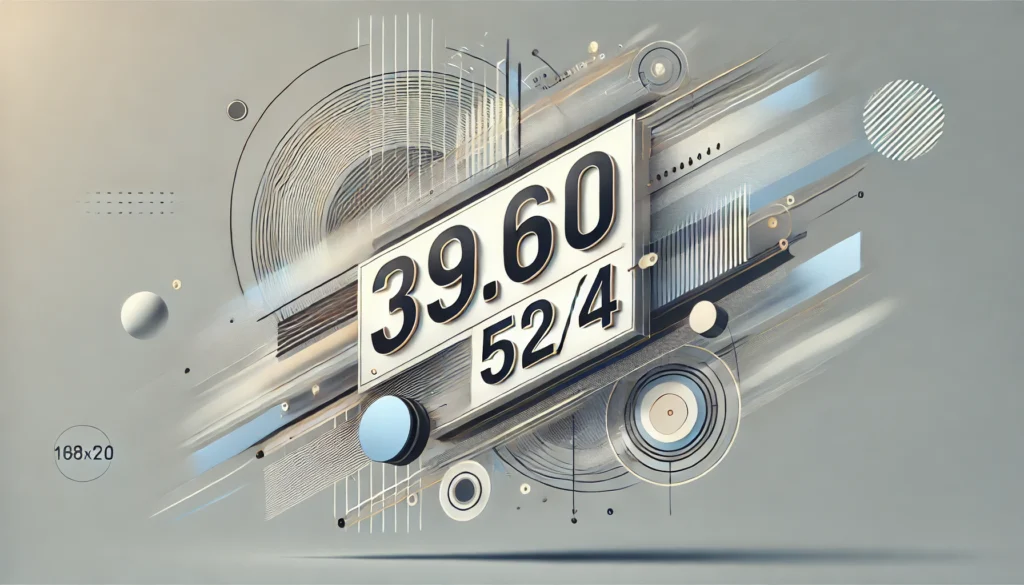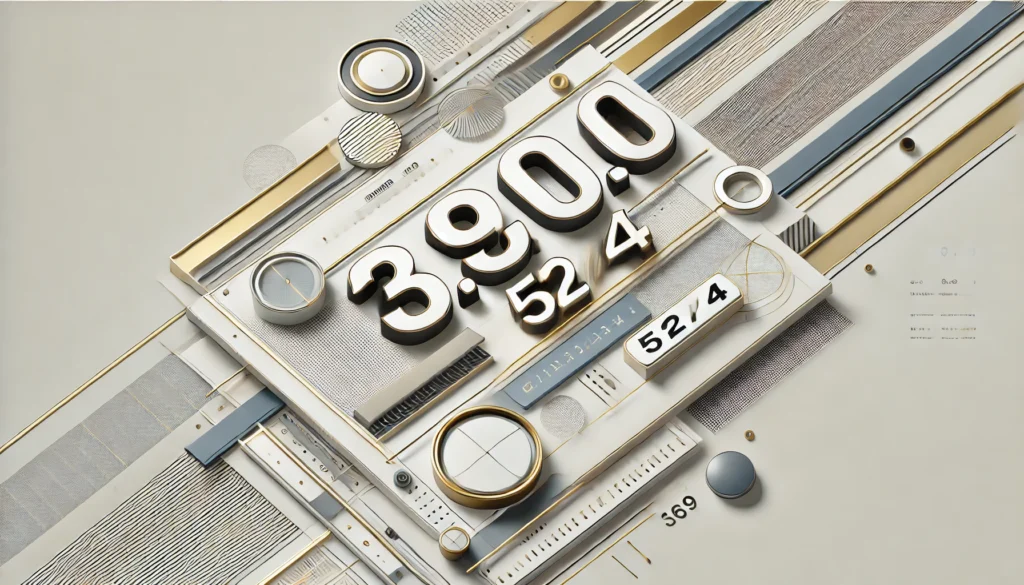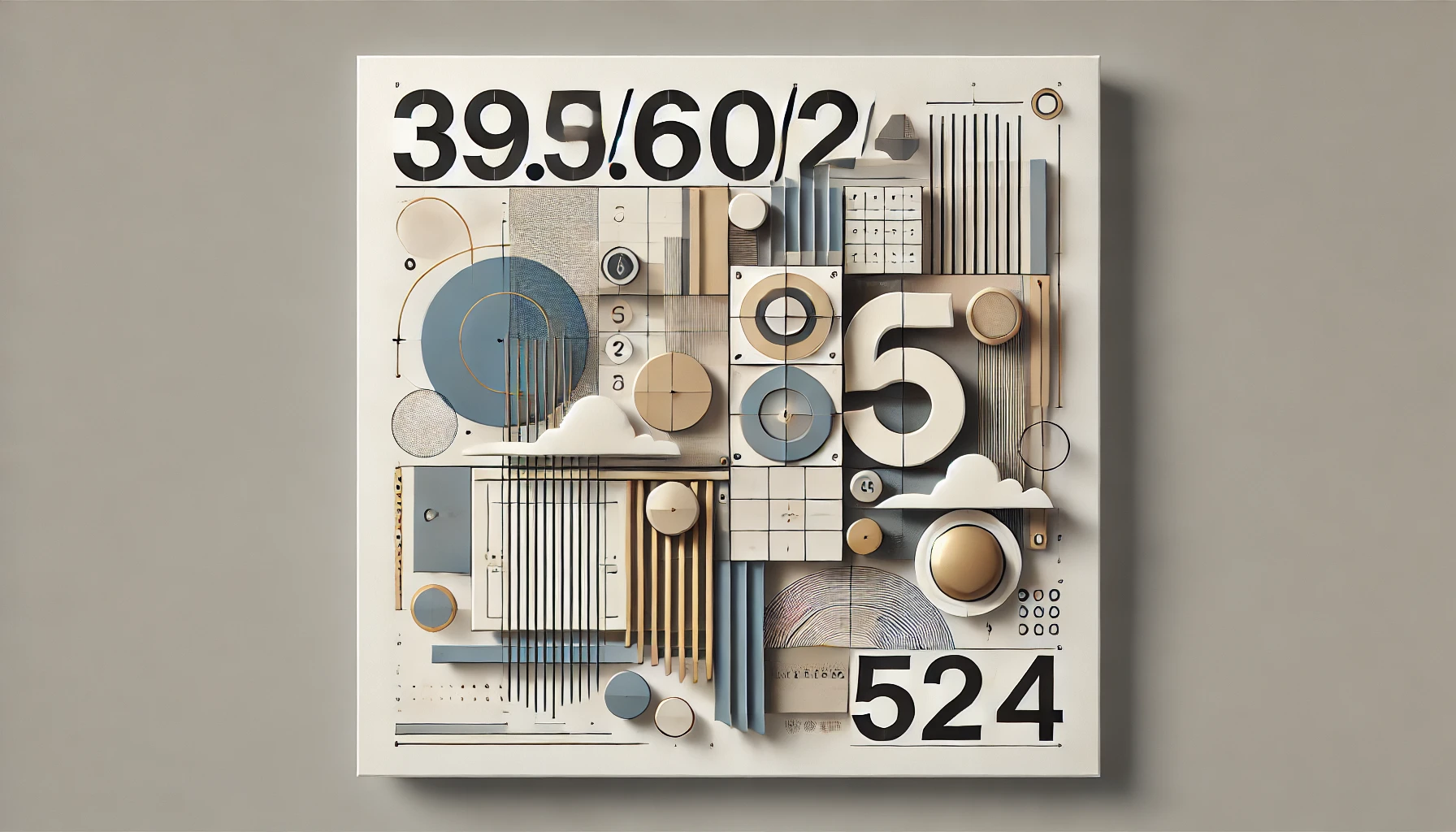If you’ve stumbled across “39.60/52/4” and thought, What on earth is this?, you’re not alone. Whether it’s a code, a measurement, or something entirely different, it sparks curiosity and questions.
Here’s the thing: people often encounter “39.60/52/4” in contexts where clarity is crucial, like tracking data, solving puzzles, or decoding patterns. So let’s break it down into simple, digestible insights.
Why Does “39.60/52/4” Keep Showing Up?
This sequence can appear in multiple scenarios:
- Measurements: Could it be dimensions or ratios used in construction or design? Think furniture specs or building blueprints.
- Codes or Keys: Sometimes, it’s shorthand for something complex, like an access code or unique identifier.
- Mathematical Problems: In math, combinations of numbers like these often point to equations or formulas.
Imagine you’re solving a DIY project. You’ve got a design diagram that says “39.60/52/4.” It might mean 39.60 inches in length, 52 inches in width, and 4 units of thickness. That’s where context comes into play.

Breaking Down Each Number: What Could 39.60, 52, and 4 Mean?
The “39.60” Component
This could reference:
- A measurement: Length, height, or even a volume.
- A time stamp: Like 39 minutes and 60 seconds (a full hour).
- A decimal figure: Common in math, finances, or analytics.
The “52” Element
Often linked to:
- A range: Like weeks in a year (52 weeks?).
- A fixed quantity: For example, playing cards in a standard deck.
- Width or dimension: Frequently used in product descriptions.
The “4” Segment
Typically signifies:
- A count: Like the number of items in a set.
- A multiplier: To calculate something in bulk.
- A specific unit: Think levels, steps, or tiers.
Picture this: You’re looking at “39.60/52/4” on a label for a shelving unit. It might be telling you the length, width, and number of shelves!
Why Understanding “39.60/52/4” Matters
Imagine misinterpreting this sequence while working on something critical. That’s why paying attention to the context it appears in makes all the difference.
Here are some scenarios where it might matter:
- Shopping Online: You’re checking furniture dimensions. Mistakes here could mean buying something that doesn’t fit.
- Technical Tasks: Engineers might use similar formats for measurements or calculations.
- Gaming or Puzzles: Sometimes, such patterns are clues or answers.
Knowing how to decode “39.60/52/4” gives you an edge in solving practical problems and avoiding costly errors.
Common Questions About “39.60/52/4”
Is This a Measurement Standard?
It could be. In industries like construction, numbers like these often describe sizes, ratios, or requirements.
Why Does the Order Matter?
The sequence—39.60, then 52, then 4—can change the meaning entirely. For example:
- Length/width/height differs from height/length/width.
- Always check labels or manuals for clarification.
Can It Apply to Everyday Life?
Absolutely! Think about assembling furniture, adjusting recipes, or planning room layouts. The sequence could be a lifesaver when interpreting instructions.
How to Decode “39.60/52/4” Like a Pro
If you’re stuck with this sequence, follow these steps:
- Look for Context: Is it in a manual, on a label, or part of a puzzle?
- Break It Down: What could each number represent individually?
- Check Examples: Does it match familiar patterns, like dimensions or time?
- Ask for Help: Consult the source—manufacturer, teacher, or expert.

Practical Examples of “39.60/52/4” in Action
Furniture Shopping
Imagine ordering a table with dimensions “39.60/52/4.” Here’s what it could mean:
- Length: 39.60 inches
- Width: 52 inches
- Height: 4 inches
Blueprints
An architect might use “39.60/52/4” to specify room layouts. If misread, you could end up with a kitchen that feels cramped or a shelf that doesn’t fit!
Mathematical Problem Solving
A teacher might assign a problem using “39.60/52/4” to calculate ratios, areas, or averages.
Key Takeaways About “39.60/52/4”
- It’s not just a random number sequence—it has meaning based on where you find it.
- Breaking it into chunks helps decode its purpose.
- Always double-check the context to avoid mistakes.
Whether you’re assembling furniture or solving puzzles, understanding “39.60/52/4” makes life easier.
And yes, if you’re wondering, “39.60/52/4” could pop up again when you least expect it.
